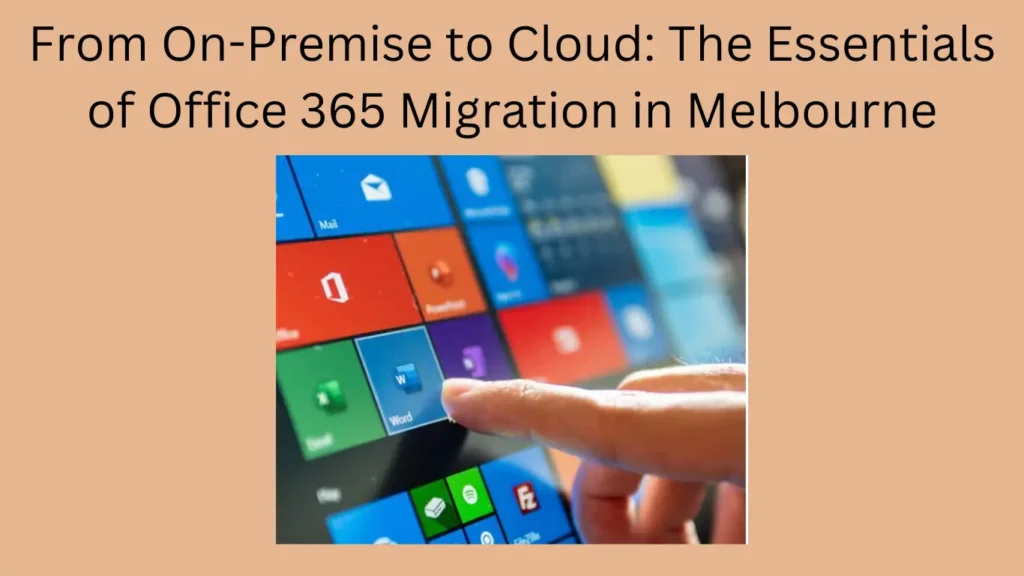Migrating from on-premise systems to the cloud can revolutionize how your business operates, offering enhanced flexibility, collaboration, and security. However, this transition requires careful planning and execution to ensure minimal disruption and maximum benefits. This guide will walk you through the essentials of Office 365 migration in Melbourne, focusing on creating helpful, reliable, people-first content.
Understanding Office 365 Migration
What is Office 365 Migration?
Office 365 migration involves moving your organization’s data, applications, and email services from on-premise servers to Microsoft’s cloud-based Office 365 platform. This shift brings numerous advantages, such as improved accessibility, scalability, and enhanced security features.
Benefits of Migrating to Office 365
- Enhanced Collaboration: Office 365 provides powerful tools like Microsoft Teams, SharePoint, and OneDrive, enabling seamless communication and teamwork.
- Increased Security: With advanced security protocols and compliance tools, Office 365 ensures your data is protected against threats.
- Cost Savings: Reduces the need for physical infrastructure and maintenance, allowing for better allocation of resources.
- Scalability: Easily scale services up or down according to your business needs without significant additional costs.
Preparing for Migration
Assessing Your Current Environment
Key areas to evaluate include:
- Current Email Systems: Inventory of all email accounts and data sources.
- Data and Applications: List of all critical data and applications currently in use.
- User Accounts and Permissions: Review user roles, permissions, and access levels.
Planning the Migration
A detailed migration plan is crucial for a successful transition. Your plan should include:
- Timeline and Milestones: Define clear phases and deadlines for each stage of the migration.
- Backup Strategies: Implement robust backup solutions to ensure data is protected throughout the migration.
- User Communication: Develop a communication plan to keep users informed and engaged during the migration process.
Selecting a Migration Partner
Choosing a reliable migration partner in Melbourne can significantly streamline the process. Look for partners with:
- Local Presence: Understanding of Melbourne’s business landscape and specific regulatory requirements.
- Customer Support: Strong support services to address any issues promptly.
Executing the Migration
Setting Up Office 365
- Provisioning User Accounts: Set up Office 365 accounts for all users, ensuring proper configurations based on their roles.
- Configuring Security Settings: Implement multi-factor authentication, data loss prevention policies, and other security measures.
Migrating Data
- Email Migration: Use Microsoft’s migration tools to transfer emails from your on-premise servers to Office 365.
- Document Migration: Move files to SharePoint and OneDrive, ensuring folder structures and permissions are preserved.
- Application Integration: Integrate essential applications with Office 365 to maintain workflow continuity.
Post-Migration Activities
- User Training: Conduct training sessions to help users familiarize themselves with new tools and features.
Best Practices for a Smooth Migration
Focus on Security
- Implement robust security measures from the beginning.
- Regularly update security settings and monitor for vulnerabilities.
Leverage Local Expertise
- Engage with local IT experts who understand the unique needs of Melbourne businesses.
- Attend local Office 365 user groups and networking events for insights and best practices.
Conclusion
Migrating from on-premise systems to Office 365 can significantly enhance your business operations, offering improved collaboration, security, and scalability. By following these essentials and focusing on helpful, reliable, people-first content, you can ensure a smooth transition to the cloud. Whether you’re located in Melbourne’s bustling CBD or the surrounding suburbs, a well-planned Office 365 migration can transform your business and pave the way for future growth and success.
For further Inquires Contact Us
FAQs
What is Office 365 migration?
Office 365 migration involves transferring your organization’s data, applications, and email services from on-premise servers to Microsoft’s cloud-based Office 365 platform.
Why should my business migrate to Office 365?
Migrating to Office 365 enhances collaboration, security, and scalability. It provides powerful tools for teamwork and reduces the need for physical infrastructure, leading to cost savings.
How can I prepare my business for an Office 365 migration?
Preparation involves assessing your current IT environment, creating a detailed migration plan, choosing a reliable migration partner, and developing a user communication strategy.
What are the main steps in the Office 365 migration process?
Key steps include setting up Office 365 accounts, configuring security settings, migrating emails and documents, integrating applications, and conducting post-migration testing and user training.
How can I ensure minimal downtime during the migration?
Minimize downtime by scheduling migrations during non-business hours, using effective migration tools, and thoroughly testing all services post-migration to ensure data integrity and functionality.

